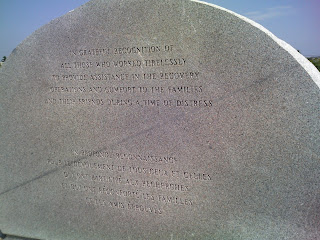July 25 A cool clear day takes us from St. Hyacynthe towards Montreal. Fortunately, on a Sunday morning, even the big city has light enough traffice to quickly sail through towards Ottawa. A stop at Masson-Angers for a Montreal smoked meat sandwich and coffee also gives us some conversation with another couple on a Suzuki Boulebard - a nice charcoal gray with black highlights.
An attempt to bypass Ottawa leads us to discover the town of Kazabazua, and a direct ride to Pembroke, ON, across 3 bridges to the peaceful town on the Ottawa river. The owner of the RV storage place is in on Sunday and says we can pick up the truck and trailer first thing Monday morning.
Pembroke on the Ottawa
Even leaving out such interesting things as giant stuffed anacondas stretched across fields (hay tubes) and the idea that one could spend a couple of months touring Gaspe, taking pictures of churchs for a book (like in Bridges of Madison County we could have Churches of the Gaspe) we are a little sad that the motorcycling part is done. We do a few errands (like changing the oil in the truck and getting keys cut), load up the bikes and head west. The windows have to be down as it seems strange to be moving along without the wind on your arms and face. Barry says to remember: 4 wheels and you don't have to lean in the corners.
By the time we get home we'll have 10,000 km on the truck, 8,000 km on each bike and 70 hrs on ferrys.
As we head back to Vancouver, we'd like to thank all our friends who shared our adventure by reading this blog and look forward to seeing you all soon.
Bye for now.



























 Signal Hill
Signal Hill 





















